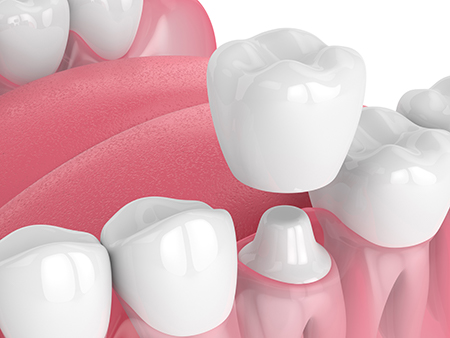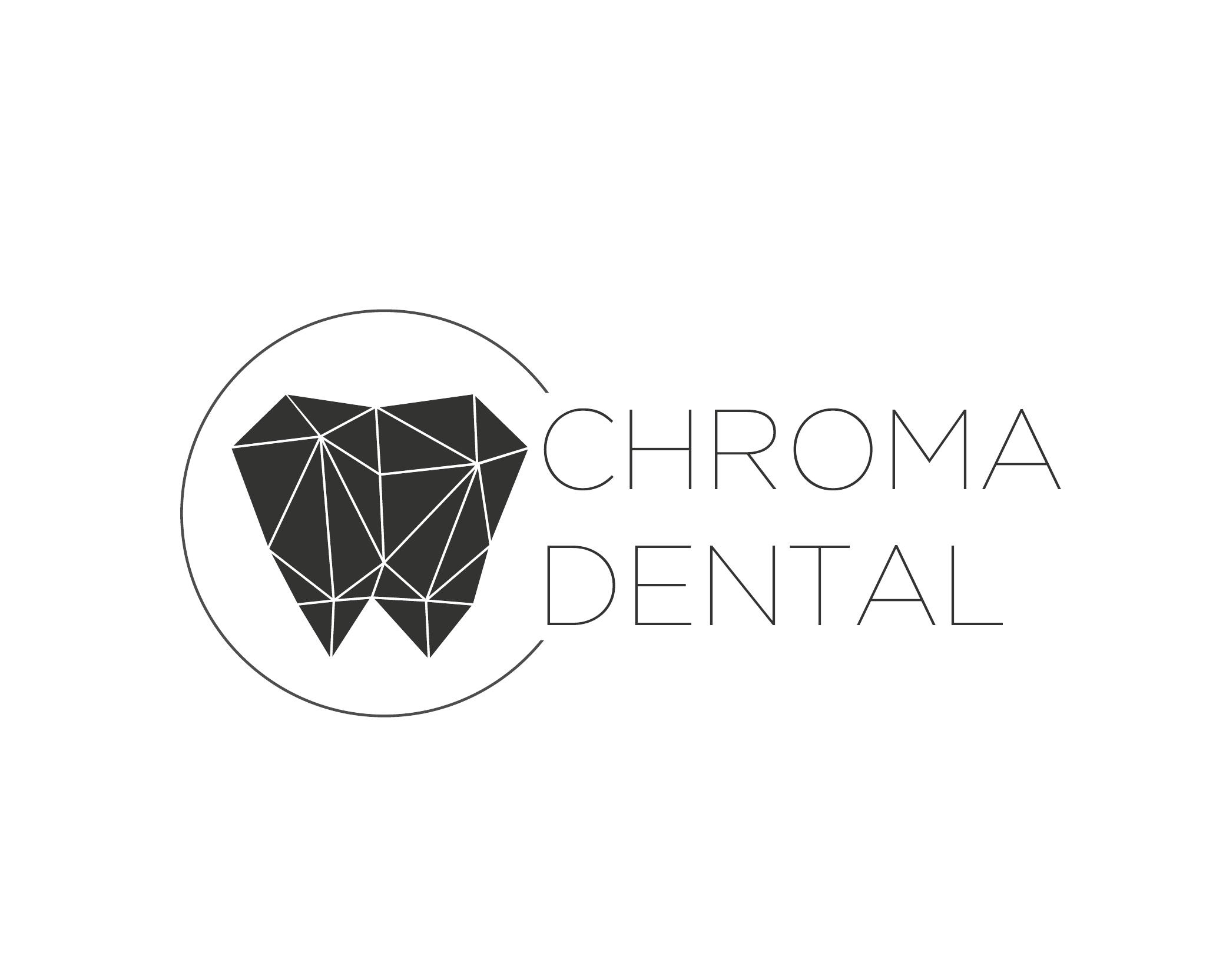At the office of Chroma Dental, we combine advanced materials and proven techniques to restore teeth with strength and natural beauty. Our team prioritizes precision, longevity, and a conservative approach that preserves as much healthy tooth structure as possible. We keep pace with the latest developments in dental ceramics to deliver results that look, feel, and function like real teeth.
Even though tooth enamel is exceptionally hard, teeth are still vulnerable to decay, fractures, and wear. In many cases, a filling is sufficient to repair damage, but when a tooth has lost substantial structure from cavities, trauma, or extensive restorative work, a full-coverage crown becomes the best way to protect the tooth and restore proper function.
Modern ceramic crowns provide a metal-free alternative that blends cosmetic appeal with clinical performance. Advances in dental ceramics have produced materials that combine strength, translucency, and biocompatibility—making all-ceramic crowns a durable and attractive option for many restorative needs.
Our practice approaches each restoration with individualized planning, balancing aesthetic goals with bite dynamics and long-term oral health. The result is a crown that not only improves appearance but also supports chewing efficiency and protects the remaining tooth.
A crown is a full-coverage restoration designed to replace the outer form of a tooth. Dentists often recommend crowns when a tooth’s remaining structure cannot reliably support a conventional filling. Crowns distribute biting forces across the entire tooth, reducing the risk of further fracture and making the tooth more predictable under load.
Common situations that call for a crown include teeth with large or failing fillings, teeth weakened by root canal treatment, cracked or split teeth, and teeth that serve as anchor points for bridges or implant restorations. Crowns can also correct shape, size, and severe discoloration when other cosmetic options are insufficient.
For patients who habitually clench or grind, a crown can restore lost height and protect the tooth from continuing damage. In posterior areas where chewing forces are greatest, choosing a material with appropriate strength is an important part of treatment planning.
Ultimately, recommending a crown is about preserving the tooth’s long-term function. Our evaluations consider the tooth’s remaining structure, the bite relationship, aesthetic goals, and how the restoration will integrate with the rest of the mouth.

All-ceramic crowns have evolved from purely cosmetic options to versatile restorations that meet both aesthetic and functional needs. Because they are metal-free, these crowns avoid the dark lines at the gumline that can occur with older metal-based restorations, creating a more natural result—especially for front teeth.
Ceramic materials interact with light similarly to natural enamel, producing translucency and surface texture that mimic neighboring teeth. This optical similarity is a major reason many patients and clinicians prefer ceramic crowns for visible areas of the mouth.
Beyond aesthetics, ceramics today offer excellent strength and resistance to wear. Some ceramic formulations require less tooth reduction, enabling more conservative preparations. They are also stain-resistant and kind to surrounding soft tissues, making them a practical option for patients with sensitivities to metal.
Because each ceramic system has unique properties, our recommendations focus on matching the material to the clinical demands: esthetic priority, occlusal forces, and the amount of remaining tooth structure. This targeted approach helps ensure predictable, long-lasting outcomes.

Not all ceramics are identical. Some are designed for maximum translucency to replicate front teeth, while others emphasize strength for back teeth under heavy bite forces. Selecting the right material is a clinical decision informed by the tooth’s position, the patient’s bite pattern, and aesthetic expectations.
Lithium disilicate ceramics, for example, offer an excellent balance of strength and translucency and are commonly used for anterior crowns and single-unit posterior crowns where appearance matters. High-translucency zirconia and monolithic zirconia are options when exceptional strength is required; modern zirconia formulations now also offer improved aesthetics.
Leucite-reinforced porcelain and other pressable ceramics remain valuable choices for highly aesthetic cases where a lifelike surface finish and subtle optical properties are needed. Each material has trade-offs, and we discuss those differences with patients so they can make an informed choice.
Our laboratory partnerships and in-office milling capabilities allow us to deliver restorations crafted from the most appropriate ceramic for each situation. When longevity and appearance are both priorities, we tailor the material selection to meet those combined goals.

Receiving a ceramic crown typically begins with a comprehensive evaluation that includes digital imaging and an assessment of the bite. If a crown is indicated, the tooth is prepared by removing decay and shaping the remaining structure to allow for a precisely fitting restoration. We take steps to preserve healthy tooth wherever possible.
Impressions may be taken using digital scanning or traditional materials, depending on the case. Many practices now offer same-day milling for certain ceramic systems, which can reduce the number of visits. When lab-fabricated crowns are used, a temporary restoration protects the tooth while the final piece is created.
At the final appointment, the crown is tried in, checked for fit and occlusion, and adjusted as needed for comfort and function. Modern adhesive and cementation techniques create a secure connection between the crown and tooth while minimizing sensitivity and optimizing esthetics.
Aftercare focuses on maintaining good oral hygiene, managing parafunctional habits like grinding, and scheduling regular dental visits to monitor the crown and surrounding tissues. With reasonable care, ceramic crowns offer durable performance and an attractive appearance for many years.
When choosing where to receive a restoration, it’s important to select a team that values technical accuracy, esthetic artistry, and evidence-based decision-making. Our clinicians blend clinical experience with contemporary materials science to recommend solutions that align with each patient’s goals and biology.
We emphasize clear communication throughout the process—explaining material choices, preparation techniques, and what to expect for function and appearance. This collaborative approach ensures that patients understand the rationale behind treatment recommendations and feel confident in their care.
From the diagnostic phase through final cementation, attention to detail matters. Proper occlusal adjustment, precise margins, and high-quality lab work contribute to predictable outcomes. Our practice maintains rigorous standards for sterilization, digital planning, and restorative protocols to support exceptional results.
If you’re considering a ceramic crown and want to learn how a tailored restoration can protect and enhance your smile, please contact us for more information. We’re happy to discuss your options and help you determine the best path forward.
While a dental filling is designed to replace a portion of a decayed or damaged tooth, a dental crown offers full coverage to restore the tooth’s entire outer surface. A well-fitting dental crown not only protects and strengthens the underlying tooth structure, but it also restores the tooth’s appearance and function.
The procedure for getting an all-ceramic crown is much like the procedure for getting any other type of crown. In all cases, the tooth needs to be prepared, an impression taken, and a permanent crown cemented into place. A single all-ceramic crown can typically be fabricated over the course of two visits. However, with CAD/CAM technology, a same-day crown can be fabricated from start to finish in a single visit. With the first approach, a temporary crown is typically worn until the second visit, when the permanent restoration is placed. As with every treatment plan, our office will explain your best options in care.
As the name implies, a temporary crown is only worn for a short time until the permanent crown is placed. A temporary crown is typically fabricated from durable tooth-colored dental acrylics. While designed to protect the underlying tooth between appointments, and until your new permanent crown gets placed, a temporary crown is also fabricated to look like a natural tooth and maintain the look of your smile.
While you should feel better having an attractive and functional tooth to restore your smile, your tooth may feel a little sensitive following treatment. This initial sensitivity will subside. We take great care to make sure your new restoration looks great, fits well, and your bite is perfect. However, we’re always happy to make any minor adjustments to ensure your comfort.
With some exceptions, teeth with root canal procedures are typically restored and protected from further damage with a full-coverage crown. Based on what’s best for your smile, our office will recommend the most appropriate restoration to maintain the health and longevity of your tooth following a root canal procedure.
A dental crown is a long-term restoration that, if properly cared for, can serve you well for many years to come. Once your new crown is placed, it requires the same brushing, flossing, and periodic checkups as your natural teeth. Avoid biting your fingernails and chewing on hard or sticky objects such as ice, pencils, or taffy, which can damage or loosen your crown. Remember, clenching and grinding your teeth puts excessive pressure on both natural teeth and dental restorations. Unless treated, this habit can compromise the longevity and integrity of your dental work, including crowns.
Although your new all-ceramic crown restores the tooth's strength, form, and function, you can still develop dental disease in the absence of proper care. To prevent gum disease and tooth decay, it’s essential to brush and floss as instructed and see our office for routine checkups, cleanings, and care.
How long a dental crown lasts depends on various factors, including your level of oral care, diet, and oral habits. While the standard answer is that dental crowns can last anywhere from 5 to 15 years, existing literature confirms that most dental crowns remain in place at 15 to 20 years.
At the office of Chroma Dental, we strive to provide the highest quality of care to address all your dental needs. Once we’ve had the opportunity to examine your smile, we can give you a clear picture of any dental issues that are present, along with a quote for how much treatment will be. The cost of dental crowns can vary a little, depending on the type of crown and its location. Our goals are to provide the highest quality of care and help patients begin treatment without additional financial stress or delay. We’re always happy to answer all your questions on dental insurance coverage, available financing, and payment plans.
Coverage for all-ceramic crowns depends on your dental insurance plan. Today, many dental plans provide some level of coverage for all-ceramic crowns. At the office of Chroma Dental, we work with patients to optimize their dental benefits and get the care they need to maintain healthy and beautiful smiles!
